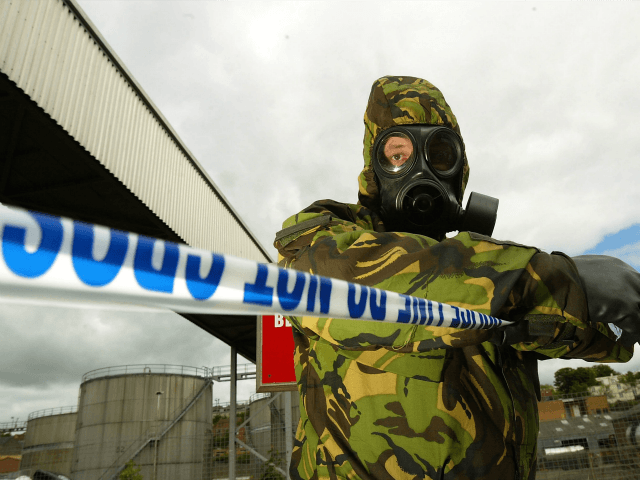A report from the European Parliament has stated that the Islamic State has biological, chemicals, radiological and even nuclear experts in their pay, as well as having the ability to smuggle such weapons into Europe.
The new briefing entitled “ISIL/Da’esh and ‘non-conventional’ weapons of terror” states: “The European Union and its Member States must prepare for the possibility of a chemical or biological attack on their territory by the self-styled ‘Islamic State’ in Iraq and the Levant” adding: “European governments and EU institutions need to be on alert, and should consider publicly addressing the possibility of a terrorist attack using chemical, biological, radiological or even nuclear materials”.
The Islamic State is said to have “an annual income amounting to US$2.9 billion” and “[t]he group earns about US$40 million a month from illicit oil sales”.
These resources are said to be plenty for the group to both procure and deploy so-called “weapons of mass destruction” and indeed recruit the experts needed to do so.
In August 2014, a laptop owned by a Tunisian physics and chemistry graduate fighting with ISIL/Da’esh in Syria was found to contain a 19-page document on how to develop bubonic plague from infected animals and turn it into a weapon.
In terms of where the group might deploy such weaponry, the report suggests “radicalised individuals who have access to and work in sensitive areas might use their insider knowledge to strike against critical infrastructure, such as, for instance, a water purification plant. Other potential targets include nuclear power stations or large chemical factories”.
The research document appears to lean heavily on the testimony of Chatham House researcher Nomi Bar-Yaacov, as well as Wolfgang Rudischhauser, the Head of the NATO WMD Non-Proliferation Centre.
Rudischhauser notes that biological and chemical weapons have been smuggled into Europe before, in turn leaning on a 2014 risk analysis by the European Commission which cites the radiological poisoning of Russian dissident Alexander Litvinenko as proof. It says:
Several post-attack investigations have shown that explosive materials and precursors to make explosives had been purchased in one Member State and transferred to another Member State where the attacks took place. Interpol’s monthly CBRN-E intelligence reports also show numerous examples of attempts to acquire, smuggle or use CBRN-E materials. Attacks using CBRN substances, such as the case of the Litvinenko radiological poisoning , have shown that CBRN threat substances have been carried undetected in and out of the European Union. Serious radiological or nuclear incidents, or the intentional dissemination of bio-agents (such as SARS, H1N1 or foot-and-mouth disease virus), could severely affect people and economies across Europe.
Just days after the Paris Attacks, French Prime Minister Manuel Valls took the extraordinary step of announcing to the French parliament that he suspected the Islamic State might attempt to deploy chemical and biological weapons in Europe.
He said on November 16th: “We must not rule anything out… I say it with all the precautions needed. But we know and bear in mind that there is also a risk of chemical or bacteriological weapons… terrorism hit France, not because of what it is doing in Iraq and Syria… but for what it is.”
“What is new are the ways of operating; the ways of attacking and killing are evolving all the time,” he added.
“The macabre imagination of those giving the orders is unlimited. Assault rifles, beheadings, suicide bombers, knives or all of these at once.”

COMMENTS
Please let us know if you're having issues with commenting.